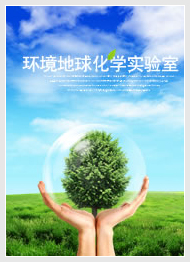张华

姓名:张 华
性别:男
学历:博士
职称:研究员,博士生导师
职务:所党委委员、环境地球化学国家重点实验室副主任
地址:贵州省贵阳市观山湖区林城西路99号;550081
E-mail:zhanghua@mail.gyig.ac.cn
简历:
张华,1981年出生,中国科学院特聘核心研究员、博士生导师,国家级高层次科技创新领军人才,国家重点研发计划项目首席科学家,科技部中青年科技创新领军人才,国家海外高层次引进青年人才,环境地球化学国家重点实验室副主任,兼贵州省土壤重金属污染防治与生态修复工程研究中心主任。2004年中国矿业大学获工学学士学位,2011年中国科学院大学获理学博士学位,同年获聘北欧著名挪威水研究院(NIVA)特聘研究员,2015年6月入选“国家海外高层次人才引进计划”辞职回国。围绕“环境健康诊断与修复”相关的重大科学问题和需求,近5年主持国家重点研发计划项目、国家自然基金委项目、中国科学院重点部署项目、SINOMER、SINOCHEM等政府间环境履约国际合作项目、中央环保专项资金项目等重要项目20余项。在Environmental Health Perspectives、Environ Science & Technology、Water Research、Biosensors and Bioelectronics等全球公共卫生与环境健康、环境科学与工程、生物传感与国际工程技术等领域发表高水平研究论文70余篇。受邀出版环境健康领域英文个人学术专著1部(Springer出版社),参与出版著作6部,担任国际SCI期刊Biosensors专题编辑/Topic Editor,国际SCI期刊International Journal of environmental research and public(IJERP)编委,任中国环境科学学会重金属污染防治专业委员会、中国矿物岩石地球化学学会环境地质地球化学专业委员会、中国土壤学会青年工作委员会等多个专委会委员,是贵州铜仁国家土壤污染综合防治先行区建设专家组副组长、国家长江生态保护修复铜仁驻点研究专家组组长、国际硒研究协会中国青年硒分会副会长、欧美同学会北欧分会理事会理事、国家生态环境部环境国际履约咨询专家。相关成果被ScienceNews、ScienceDaily、Eurekalert、The Independent等国际科技媒体广泛宣传和报道。相关成果荣获“侯德封矿物岩石地球化学青年科学家奖”、“贵州省科学技术进步一等奖”、“德国Springer Outstanding Ph.D. Thesis Prize”、“中国科学院院长特别奖”等重要荣誉。
研究方向:
主要研究方向为“环境健康诊断与修复”(Diagnosis and Remediation of Environment & Health/“Dr. E&H”),具体包括:
【1】硒与HMs交互及风险评估
【2】污染环境修复与同一健康
【3】传感技术与环境分子诊断
招生招聘:
热诚欢迎联系报考(或直接申请免试推荐就读)硕士及博士研究生;常年高薪(25万-40万/年)诚聘环境科学与环境工程、生物传感、微生物学、分子生物学、医学等相关专业博士后,达到相关出站要求可申请直接转聘为正高级研究员,鼓励跨专业多学科交叉研究。
近5年代表性科研任务(限10项):
近5年代表性科研任务(限10项):
【01】国家重点研发计划项目,“场地地下水典型重金属光/电协同原位一体化便携式检测装备研制及应用示范”(2020YFC1807300),项目负责人,2020 -2024 ;
【02】中国科学院科技服务网络计划(STS计划)重点项目,“流行病病原体快速传感技术及其社区应用”(KFJ-STS-QYZD-185),项目负责人,2020-2021;
【03】中国-挪威政府间国际合作项目(SINOCHEM)-“中挪合作化学品环境国际公约履约能力建设项目--典型地区汞公约履约能力建设项目”(FECO/LY4/S/20/434),项目负责人,2019-2022
【04】国家级人才计划项目,“环境健康诊断与污染修复” ,项目负责人,2015-2018;2021-2024;
【05】国家重点研发计划课题,“残坡积型农田重金属污染过程及控制因素”(2017YFD0800302),课题负责人,2017-2020
【06】中国科学院科技服务网络计划 (STS)重点项目,“贵州铜仁国家土壤污染综合防治先行区建设科技支撑关键技术集成及示范”(KFJ-STSZDTO-006),项目负责人,2017-2018;
【07】国家自然科学基金委面上项目,“汞矿区汞对典型农作物硒富集的抑制作用”(41573125),项目负责人,2016-2020
【08】中国科学院重点部署项目,“贵州汞矿区汞污染修复关键技术研究及示范” (KFZD-SW-304),项目负责人,2016-2017;
【09】中央环保资金项目,“铜仁市土壤重金属污染现状、人体暴露风险评估及污染土壤修复技术路线项目”,项目负责人,2017-2018;
【10】国家长江生态环境保护修复联合研究,铜仁市长江生态环境保护修复技术与方案研究(2019-LHYJ-01-0207-57),项目负责人,2019-2021
社会/学术任职(限5项):
【01】国际SCI期刊Biosensors专题编辑/Topic Editor、International Journal of environmental research and public(IJERP)编委
【02】国际硒研究协会中国青年硒分会/The China Youth Branch,International Society for Selenium Research (ISSR)副会长/Vice-president
【03】中国环境科学学会重金属污染防治专业委员会、中国矿物岩石地球化学学会环境地质地球化学专业委员会、中国土壤学会青年工作委员会等专委会委员
【04】贵州省高级人民法院环境损害鉴定特聘专家,贵州省生态环境厅土壤污染详查、建设用地土壤-地下水污染防治核心专家
【05】贵州铜仁国家土壤污染综合防治先行区建设专家组副组长、国家长江生态环境保护联合修复铜仁驻点研究专家组组长
科技荣誉(限5项):
【01】国家级高层次科技创新领军人才
【02】科技部中青年科技创新领军人才
【03】国家海外高层次引进青年人才
【04】贵州省人民政府科学技术进步一等奖(2项)
【05】候德封矿物岩石地球化学青年科学家奖
代表性论著:
※第一作者论著(限5项)
※第一作者论著(限5项)
【01】. H Zhang. Impacts of Selenium on the Biogeochemical Cycles of Mercury in Terrestrial Ecosystem in Mercury Mining Areas. Springer Berlin Heidelberg (2014). ISBN 978-3-642-54918-2.【特邀个人学术专著】;
【02】. H Zhang, X Feng*, T Larssen, G Qiu, RD Vogt. In Inland China, Rice, rather than Fish is the Major Pathway for Methylmercury Exposure. Environmental Health Perspectives. 2010, 118(9). 1183-1189.
【03】. H Zhang, X Feng*, T Larssen, L Shang, P Li. Bio-accumulation of Methylmercury versus Inorganic Mercury in Rice (Oryza sativa L.) Grain. Environmental Science & Technology. 2010, 44(12), 4499-4504.
【04】. H Zhang, X Feng*, T Larssen, et al. Selenium in Soil Inhibits Mercury Uptake and Translocation in Rice (Oryza sativa L.).Environmental Science & Technology. 2012, 46, 10040–10046.
【05】. H Zhang, X Feng*, H.M. Chan, T Larssen. New Insights into Traditional Health Risk Assessments of Mercury Exposure: Implications of Selenium. Environmental Science & Technology. 2014, 48, 1206-1212.
※通讯作者论著(限2020-2021年)
【02】. H Zhang, X Feng*, T Larssen, G Qiu, RD Vogt. In Inland China, Rice, rather than Fish is the Major Pathway for Methylmercury Exposure. Environmental Health Perspectives. 2010, 118(9). 1183-1189.
【03】. H Zhang, X Feng*, T Larssen, L Shang, P Li. Bio-accumulation of Methylmercury versus Inorganic Mercury in Rice (Oryza sativa L.) Grain. Environmental Science & Technology. 2010, 44(12), 4499-4504.
【04】. H Zhang, X Feng*, T Larssen, et al. Selenium in Soil Inhibits Mercury Uptake and Translocation in Rice (Oryza sativa L.).Environmental Science & Technology. 2012, 46, 10040–10046.
【05】. H Zhang, X Feng*, H.M. Chan, T Larssen. New Insights into Traditional Health Risk Assessments of Mercury Exposure: Implications of Selenium. Environmental Science & Technology. 2014, 48, 1206-1212.
※通讯作者论著(限2020-2021年)
【06】. K Mao, H Zhang*, Y Pan, Z Yang*. Biosensors for wastewater-based epidemiology for monitoring public health. Water Research 2021. 191:116768
【07】. K Mao, ZYang*, H Zhang*, Xli*, J M.Cooperd. Paper-based nanosensors to evaluate community-wide illicit drug use for wastewater-based epidemiology. Water Research. 2021, 116559
【08】. C Chang, R Yin*, F Huang, G Sun, K Mao, D Lei, H Zhang*. Understanding the Bioaccumulation of Mercury in Rice Plants at the Wanshan Mercury Mine, China: Using Stable Mercury Isotopes. Journal of Geophysical Research-Biogeosciences, 2021, 126(2): e2020JG006103.
【09】. K Zhang, H Zhang*, H Cao, Y Jiang, K Mao,* Zhugen Yang. Rolling Circle Amplification as an Efficient Analytical Tool for Rapid Detection of Contaminants in Aqueous Environments. Biosensors 2021, 11, 352.
【10】. W Ali, H Zhang*, Z Wang, C Chang, A Javed, K Ali, W Du, N Niazi, K Mao*, Z Yang,Occurrence of various viruses and recent evidence of SARS-CoV-2 in wastewater systems,Journal of Hazardous Materials.2021, 414:125439
【11】. C Chang, R Yin, F Huang, R Wang, C Chen, K Mao, X Feng, H Zhang*, A new method of predicting the contribution of TGM to Hg in white rice: Using leaf THg and implications for Hg risk control in Wanshan Hg mine area. Environmental Pollution, 2021, 288, 117727
【12】. Y Guo, K Mao, H Cao, W Ali, D Lei, and H Zhang*, Exogenous selenium (cadmium) inhibits the absorption and transportation of cadmium (selenium) in rice. Environmental Pollution. 2021. 268:115829
【13】. K Mao, H Zhang*, Z Yang*, Can a paper-based device trace COVID-19 sources with wastewater-based epidemiology? Environmental Science & Technology. 2020.54 (7): 3733-3735
【14】. K Mao, H Zhang,* Z Yang*. The potential of an integrated biosensor system with mobile health and wastewater-based epidemiology (iBMW) for the prevention, surveillance, monitoring and intervention of the COVID-19 pandemic. Biosensors and Bioelectronics. 2020, 169 (2020) 112617
【15】. C Chang, C Chen, R Yin*, Y Shen, K Mao, Z Yang, X Feng*, H Zhang*. Bioaccumulation of Hg in rice leaf facilitates selenium bioaccumulation in rice (Oryza sative L.) leaf in the Wanshan mercury mine. Environmental Science & Technology. 2020, 54(6): 3228-3236
【16】. W Ali, H Zhang*,et a., Insights into the mechanisms of arsenic-selenium interactions and the associated toxicity in plants, animals, and humans: A critical review. Critical Reviews in Environmental Science & Technology. 2020, DOI: 10.1080/10643389.2020.1740042
【17】. K Mao, H Zhang,* Z Wang, H Cao, K Zhang, X Li , Z Yang*,Nanomaterial-based aptamer sensors for arsenic detection,Biosensors and Bioelectronics. 2020, 148: 111785
【18】. W Ali, K Mao, H Zhang*, et al., Comprehensive review of the basic chemical behaviours, sources, processes, and endpoints of trace element contamination in paddy soil-rice systems in rice-growing countries,Journal of Hazardous Materials.2020, 397:122720
【19】. Y Xing, J Wang*, SM Shaheen, X Feng, Z Chen, H Zhang*, J Rinklebe*. Mitigation of mercury accumulation in rice using rice hull-derived biochar as soil amendment: A field investigation. Journal of Hazardous Materials. 2020. 121747
【20】 .Kang Mao, Hua Zhang,* Yuwei Pan, et al., Nanomaterial-based aptamer sensors for analysis of illicit drugs and evaluation of drugs consumption for wastewater-based epidemiology. TrAC Trends in Analytical Chemistry 2020, 130 , 115975
【21】.K Mao, K Zhang, W Du, W Ali, X Feng, H Zhang*. The potential of wastewater-based epidemiology as surveillance and early warning of infectious disease outbreaks. Current Opinion in Environ Sci & Health. 2020. 17:1-7【Editor-in-chief invited paper】.
【22】.D Teng, B Zhang, G Xu, B Wang, K Mao, J Wang, J Sun, X Feng, Z Yang, H Zhang*. Efficient Removal of Cd(II) from Aqueous Solution by Pinecone Biochar: Sorption Performance and Governing Mechanisms. Environmental Pollution. 2020, 265:115001
【15】. C Chang, C Chen, R Yin*, Y Shen, K Mao, Z Yang, X Feng*, H Zhang*. Bioaccumulation of Hg in rice leaf facilitates selenium bioaccumulation in rice (Oryza sative L.) leaf in the Wanshan mercury mine. Environmental Science & Technology. 2020, 54(6): 3228-3236
【16】. W Ali, H Zhang*,et a., Insights into the mechanisms of arsenic-selenium interactions and the associated toxicity in plants, animals, and humans: A critical review. Critical Reviews in Environmental Science & Technology. 2020, DOI: 10.1080/10643389.2020.1740042
【17】. K Mao, H Zhang,* Z Wang, H Cao, K Zhang, X Li , Z Yang*,Nanomaterial-based aptamer sensors for arsenic detection,Biosensors and Bioelectronics. 2020, 148: 111785
【18】. W Ali, K Mao, H Zhang*, et al., Comprehensive review of the basic chemical behaviours, sources, processes, and endpoints of trace element contamination in paddy soil-rice systems in rice-growing countries,Journal of Hazardous Materials.2020, 397:122720
【19】. Y Xing, J Wang*, SM Shaheen, X Feng, Z Chen, H Zhang*, J Rinklebe*. Mitigation of mercury accumulation in rice using rice hull-derived biochar as soil amendment: A field investigation. Journal of Hazardous Materials. 2020. 121747
【20】 .Kang Mao, Hua Zhang,* Yuwei Pan, et al., Nanomaterial-based aptamer sensors for analysis of illicit drugs and evaluation of drugs consumption for wastewater-based epidemiology. TrAC Trends in Analytical Chemistry 2020, 130 , 115975
【21】.K Mao, K Zhang, W Du, W Ali, X Feng, H Zhang*. The potential of wastewater-based epidemiology as surveillance and early warning of infectious disease outbreaks. Current Opinion in Environ Sci & Health. 2020. 17:1-7【Editor-in-chief invited paper】.
【22】.D Teng, B Zhang, G Xu, B Wang, K Mao, J Wang, J Sun, X Feng, Z Yang, H Zhang*. Efficient Removal of Cd(II) from Aqueous Solution by Pinecone Biochar: Sorption Performance and Governing Mechanisms. Environmental Pollution. 2020, 265:115001
【23】. D Teng, K Mao*, W Ali, G Xu, G Huang, H Zhang*. Describing the toxicity and sources and the remediation technologies for mercury-contaminated soil. RSC Advances. 2020.10, 23221
【24】. K Mao, X Min, H Zhang*, K Zhang, H Cao, Y Guo, Z Yang*, Paper-based microfluidics for rapid diagnostics and drug delivery. Journal of Controlled Release. 2020. 322:187-199

